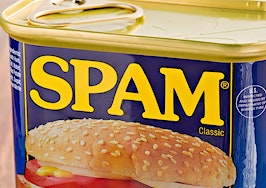- Email marketing shouldn't be a passive, "set it and forget it" form of outreach. It requires metrics, segmentation and smart content.
Have suggestions for products that you’d like to see reviewed by our real estate technology expert? Email Craig Rowe.
Drip campaigns are talked about often in real estate circles.
I notice the topic on social media groups, I’m often asked about them from readers, and there is no shortage of software solutions that find a way to shoehorn a mass email feature into their accounting tool.
There are a few things I think the industry can do better when it comes to this powerful email marketing effort.
First, and I think most importantly: stop calling them “drip campaigns.”
The term itself assumes that you can schedule a few emails for the coming weeks and let them “drip” out to your audience, hoping for the best.
Email marketing is most effective when highly segmented and content-specific. Each send needs to be scrutinized and tested.
Here’s why: In an increasingly loud marketing environment, repeated emails with subject matter that doesn’t appeal to the recipient will be regarded as spam. You probably won’t be reported, but folks will unsubscribe.
Thus, if you’re sending houses for sale to someone who closed eight months ago, you’re more than likely only doing damage to the relationship.
However, if you send people a notice of a Groupon for their favorite yoga studio, or that you’re hosting a business networking event for clients, you may keep their attention.
This is why it is best practice that each message should be individually regarded.
The right kind of communication
As of Feb. 1, average email open rates for real estate are hovering around 21.66 percent, according to Mailchimp’s compilation of 2015 customer sends. That puts agents in the top half of sectors measured.
This shows that people looking to buy and sell homes want email from agents. But they don’t want bad email.
A recurring sales need in real estate is customer referrals. How do you get them? What’s the best script?
Agents need to be careful using email for this practice.
The risk you take by asking customers what they can do for you is reminding them that you are no longer needed. A referral email is all about you.
Email inboxes are sacred workspaces for many people. The day begins and ends there and time is precious. Respect the inbox. Provide for your customers; don’t ask them to provide for you.
‘The new spam’
In this Litmus.com blog post on the subject, I found the following excerpt from coveted email expert Chad White’s book “Email Marketing Rules.” White writes:
“Having permission only gets you so far nowadays. Irrelevant and unwanted email is the new spam in the eyes of both consumers and Internet Service Providers (ISPs).”
Provide for your customers, don’t ask them to provide for you.
The second part of that is especially compelling. ISPs are the gatekeepers of email. And they know good from bad.
Agents would be wise to cleanly separate previous customers from those getting “new listing” and “just closed” emails. They aren’t relevant.
Back in 2014, the percentage of email read on mobile devices surpassed 50 percent, also according to Litmus, which produces email testing and deliverability software.
Surprisingly, Mailchimp reports that despite our heavy business use of email on mobile devices, the format ranks last in engagement, behind tablets and PCs.
However, the email company did find that emails designed to be responsive (automatically resized for device screen) saw a 15 percent average jump in total clicks at the top level.

Deeper links, that is, the fifth or sixth active URL in your message, do not benefit from that engagement increase.
The takeaway is to make sure you know what your message will look like on mobile devices and put the important stuff up top.
Don’t view email marketing as a passive sales tactic. Don’t “drip” messages. Be smart about it, make everyone worth your while.
More importantly, make it worth your clients’ time.
Have a technology product you would like to discuss? Email Craig Rowe.









